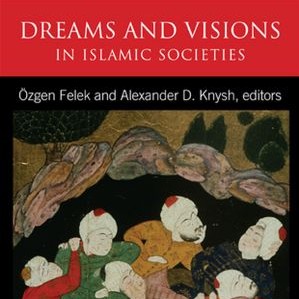Editors: Ozgen Felek and Alexander D. Knysh
Publisher: SUNY Press; 322 pages
Book Review by: Paiso Jamakar
This is a collection of essays on dreams and visions, their importance and their impact upon Islamic people around the world. There are numerous commentaries and explanations by the 15 authors of articles (including the two editors Felek and Knysh) in this book on this little-known subject of dreams and their role in the evolution of Islam.
Dreams not only played an important role in how Islam developed, but also helped Islamic leaders create important, detailed images of themselves so the public would understand and perceive them correctly.
Ozgen Felek, one of the editors, discusses this topic in her chapter entitled “(Re) creating Image and Identity: Dreams and Visions As a Means of Murad III’s Self-Fashioning.” She discusses how Murad III fashioned an image of himself through accounts of his dreams and visions.
Felek writes that while dreams have been studied from many perspectives – including anthropological, historical, mystical, psychological, religious, and scientific perspectives – “there is to my knowledge, no study that examines dreams as a means of self-fashioning.”
The various articles in this book discuss topics covered in many published books for readers, especially Westerners, to understand the purpose such dreams and visions serve Muslim communities the world over.
People in the West for the most part do not know or realize how important dreams and visions are to Muslims. This book aims to shed light on this crucial aspect of Islamic life.
It is organized into two parts, the first one on material found in many sources – biographical. historical, theological, poetical and oral in nature, including narratives. The second part of this book deals with sources found in Sufi literature.
The subjects of the dreams are varied. To name the titles of just three chapters in the first part of the book, they are “Dreaming the Truth” in the Stra of Ibn Hirsham; “Dreaming Hanbalites: Dream-Tales in Prosopographical Dictionaries;” and “Dreaming the Elixir of Knowledge: How a 17th century Poet from Herat Got His Name and Fame.”
Alexander D. Knysh, one of the two editors, states in his Introduction that the great Arab mystic Ibn al Arabi (1165-1240) had written: “the only reason God placed sleep in the animate world was so that everyone might …know that there is another world similar to the sensory world.”
Arabi explains further that “dreams have a place, a locus and a state. Their state is sleep, which is an absence from manifest sensory things that produce ease because of weariness which overcomes the soul in this plane in the state of wakefulness.”
Knysh writes that Arabi frequently invoked the Prophet Mohammed’s frequent saying that “people are asleep, and when they die, they awake…people will never cease being sleepers, so they will never cease being dreamers.”
Medical studies have shown that there is not just a physiological need for rest but also a psychological basis for sleep. They’ve shown the harmful effects of prolonged sleep-deprivation. So people will certainly never cease to be sleepers during some part of their normal 24-hour living cycle. There is an ingrained need for sleep, and it is as essential to our survival as is food, water and oxygen.
Arabi asserted that dreams served the dual purpose of not only informing themselves of the true state of affairs in this (sensory, wakeful) world we live in, but also of the next one, our here-after world. Knysh writes that Arabi had wanted people “to remain attuned to the ever-changing modes of divine self-disclosure in the objects and phenomena of the empirical universe.”
Knysh helps us further understand what dreams mean to Islamic people by citing the studies of Marshall Hodgson (1922-1968), a well-known historian of Islamic civilization.
Hodgson believed that dreams were not merely “expressions of the dreamer’s repressed phobias” as Sigmund Freud had asserted in his theory of psychoanalysis.
Hodgson had written that Islamic people were concerned about what dreams could tell them about “the world outside the dreamer, things that could not otherwise be known.”
So dreams were believed by medieval, and now, by modern Muslims (just as Arabi had believed) to be “windows into the hidden mysteries of this world and the next,” writes Knysh. He adds that, in the words of one Western scholar, dreams, to Muslims, are a form of “divine revelation and a chronological successor to the Koran.”
This book contains what I believe to be very little-known insights into what dreams and visions mean to Islamic people, and in my opinion, the authors and editors have performed a valuable service by shedding light upon this important aspect of Islam.
My view is that better understanding of people of different cultures and religious backgrounds leads to world peace, and this book’s authors and editors has done a great job in furthering that essential step to long-term world peace.







